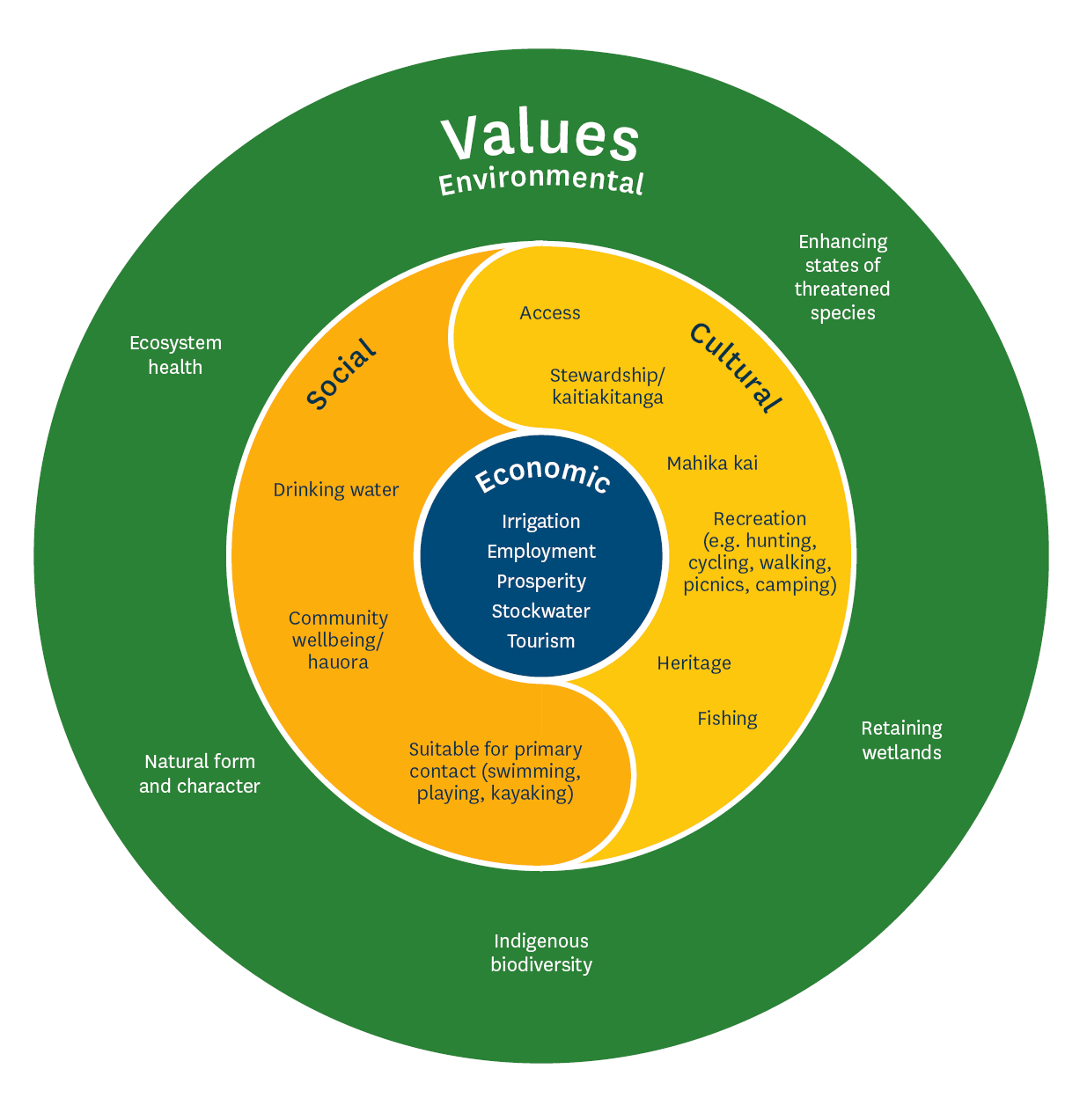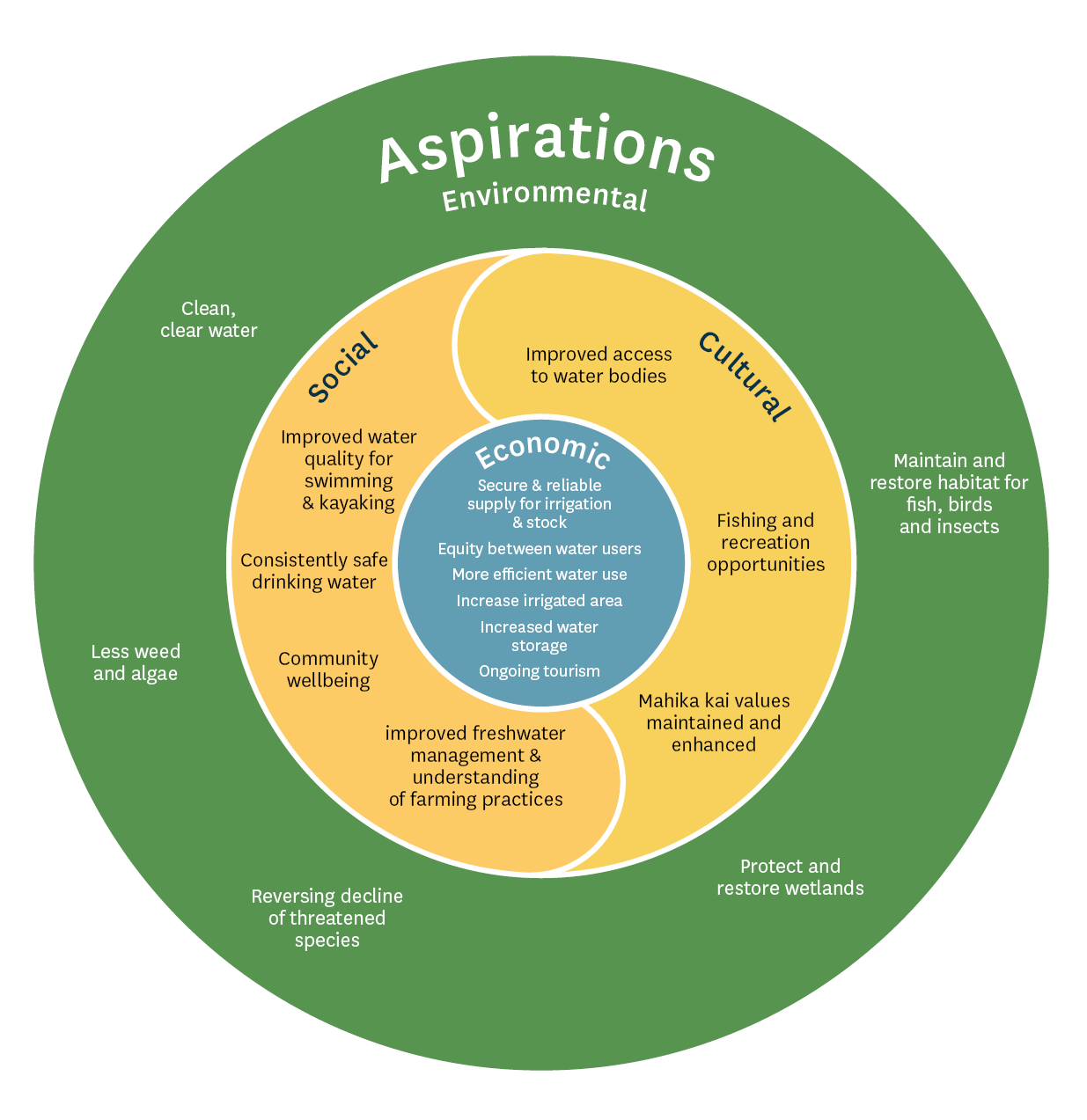Water is a scarce and highly valued resource in the catchment. It supports multiple and sometimes competing environmental, social, cultural and economic values. Some of these require water extraction while others depend on water remaining in water bodies.
In September 2019, ORC asked the community living in or near the Manuherekia Rohe what they value or love about water bodies and their surrounds and what they want them to be like in the future. The community were invited to have their say at public meetings in Omakau and Alexandra, via an online survey, by returning the tear-off slip from a brochure delivered to all letter boxes in the area, or by email.
Values and aspirations were also identified in reports by the Manuherekia Catchment Water Strategy Group in 2013 and by Kai Tahu/Aukaha in 2017, and through an ORC consultation with the community in August 2016.
The values gathered have been summarised in the diagram below:

Environmental values relate to the health, integrity and extent of the natural environment, social values are about the health and wellbeing of the community, economic values enable the community’s livelihood and cultural values are about ways of life and links to the past that people wish to preserve.
The future aspirations identified for the river are summarised in the diagram below:

Next steps
These values and aspirations reflect the spectrum of views we heard (which are not all compatible) and will inform the development of different options for future management of the rohe, which we will discuss with the community before developing a new Manuherekia Rohe chapter for the land and water plan.
